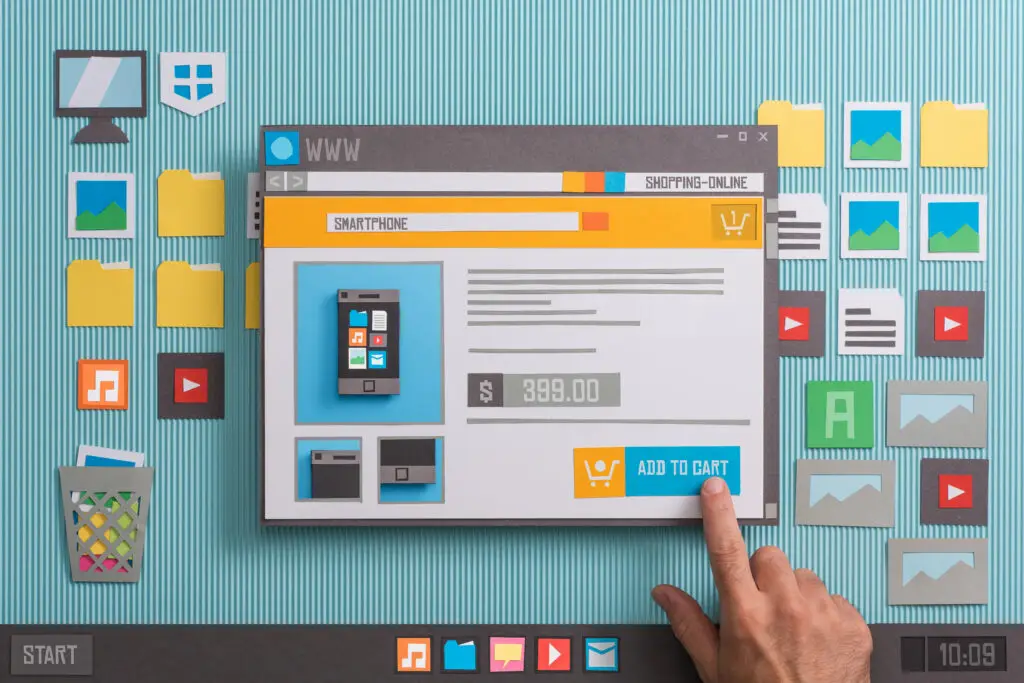In the vast landscape of the internet, where countless websites compete for attention, the difference between success and obscurity often boils down to one crucial factor: design.
In an era where user experience reigns supreme, businesses can no longer afford to overlook the importance of great web design in driving conversions and maximizing return on investment (ROI).
From captivating visuals to intuitive navigation, every aspect of web design plays a pivotal role in shaping the user journey and influencing purchasing decisions.
In this article, we’ll explore how investing in professional web design can yield tangible results, enhancing conversions and delivering a significant return on investment.

The Power of First Impressions
They say you never get a second chance to make a first impression, and nowhere is this more true than in the digital realm.
Studies have shown that users form opinions about a website within milliseconds of landing on it, with design elements such as layout, color scheme, and typography playing a decisive role in shaping perceptions.
A visually appealing website not only grabs attention but also instills trust and credibility in the eyes of visitors. Conversely, a poorly designed or outdated website can deter users from engaging further, leading to higher bounce rates and lost opportunities.
Think about it: if you’re trying to choose a service between two similar companies, one with a professional online look and the other with an amateur aura, which one are you more likely to choose?
Navigating the User Experience
User experience (UX) is the cornerstone of effective web design. It encompasses the entire journey that users take from the moment they land on a website to the moment they complete a desired action.
A well-designed website anticipates user needs, guides them seamlessly through the content, and encourages interaction at every touchpoint.
Intuitive navigation, clear calls to action, and streamlined checkout processes are just a few examples of UX best practices that can enhance user satisfaction and drive conversions.
By prioritizing UX in the design process, businesses can create a friction-less experience that keeps users coming back for more.
Building Brand Trust and Loyalty
In a crowded marketplace, building brand trust is essential for long-term success. You want users to feel like they’re in good hands, not like they’re about to get scammed by a “Nigerian prince.”
A professionally designed website communicates competence, reliability, and attention to detail. It reinforces brand values and fosters trust among potential customers.
Consistent branding elements such as logos, color palettes, and messaging across all touchpoints create a cohesive brand identity that resonates with users and cultivates loyalty over time.
By investing in high-quality design, businesses can differentiate themselves from competitors and build strong, lasting relationships with their audience.

The Science of Conversion Optimization
Conversion optimization is the process of fine-tuning website elements to maximize the likelihood of desired actions, such as making a purchase.
After all, you want users to do more than just browse your site – you want them to take action, whether that’s buying your product, signing up for your newsletter, or just clicking that “Contact Us” button.
Through A/B testing, heat mapping, and other website analytical tools, businesses can identify pain points in the user journey and experiment with design variations to improve conversion rates.
From optimizing landing pages for clarity and relevance to simplifying checkout processes for frictionless transactions, every design decision should be guided by the goal of driving conversions and ultimately boosting ROI.
Measuring Success
Feedback data is extremely helpful for web design.
By tracking key performance indicators (KPIs) such as conversion rates, bounce rates, and average session duration, businesses can gain valuable insights into the effectiveness of their design efforts.
A/B testing different design elements, conducting user surveys, and analyzing user behavior through tools like Google Analytics empower businesses to make informed decisions and iterate on their design strategy over time.
By continuously monitoring and optimizing performance metrics, businesses can ensure that their website remains aligned with user expectations and business objectives.
Utilizing Mobile Responsiveness
In a world where everyone’s glued to their smartphones, having a website that looks just as good on a tiny screen as it does on the big screen is non-negotiable.
By optimizing your design for smartphones and tablets, you can tap into the ever-growing population of mobile users and provide them with a seamless browsing experience.
Mobile-friendly design reduces friction in the user journey, making it easier for visitors to navigate your site, explore your offerings, and ultimately convert.
Whether it’s a quick purchase on the go or filling out a contact form while waiting for a bus, mobile responsiveness opens up new opportunities for conversions and boosts ROI.

Streamlining the Checkout Process
Nobody likes a checkout process that’s longer than the line at the DMV.
Cart abandonment is the bane of every e-commerce retailer’s existence, but with strategic design tweaks, you can minimize the likelihood of users abandoning their purchase mid-way.
Simplifying the checkout process by reducing the number of steps, offering guest checkout options, and providing clear progress indicators can significantly improve conversion rates.
Additionally, optimizing form fields for autofill and integrating secure payment gateways instills confidence in users and reduces friction at the point of purchase.
Give your customers the VIP treatment – no waiting, no hassle, just a few clicks and boom, they’re the proud owners of your latest masterpiece.
Leveraging Social Proof
Humans are social creatures, and we tend to trust the opinions and actions of others.
Incorporating social proof elements such as customer reviews, ratings, and testimonials into your website design can help build trust and credibility with potential customers.
By showcasing social proof, you’re giving hesitant buyers the nudge they need to hit that “Buy Now” button.
Additionally, displaying user-generated content like photos or testimonials can create a sense of community and authenticity around your brand. This fosters deeper connections with your audience and ultimately drives conversions.
Implementing Persuasive Copywriting
While design aesthetics are crucial, the words you use on your website also play a significant role in influencing user behavior.
Persuasive copywriting techniques, such as compelling headlines, benefit-driven product descriptions, and persuasive calls to action (CTAs), can motivate users to take the desired action, whether it’s making a purchase, signing up for a newsletter, or scheduling a consultation.
By crafting engaging and persuasive copy that speaks directly to your target audience’s pain points and desires, you can increase engagement, encourage conversions, and ultimately boost ROI.
Optimizing Page Speed
In a world where attention spans are shorter than a goldfish’s memory, every second counts.
A slow-loading website not only frustrates users but also has a significant impact on conversion rates and ROI.
By optimizing page speed through techniques such as image compression, browser caching, and minifying code, you can ensure that your website loads quickly and smoothly across all devices.
Faster load times not only improve user experience but also positively impact search engine rankings, driving more organic traffic to your site.
So, think of page speed optimization as your website’s way of saying, “I respect your time, and I promise I’ll make this quick.”
By prioritizing speed and performance in your design efforts, you can reduce bounce rates, increase time on site, and ultimately drive higher conversions and ROI.

Conclusion
Great design isn’t just about making your website look pretty – it’s about turning visitors into customers.
From creating a positive first impression to optimizing the user experience and building brand trust, every aspect of web design influences the success of a website in achieving its goals.
By investing in professional web design and prioritizing user-centric principles, businesses can create compelling online experiences that resonate with users, drive conversions, and deliver a significant return on investment.
In today’s competitive landscape, great design is not just a luxury – it’s a strategic imperative for business success.






